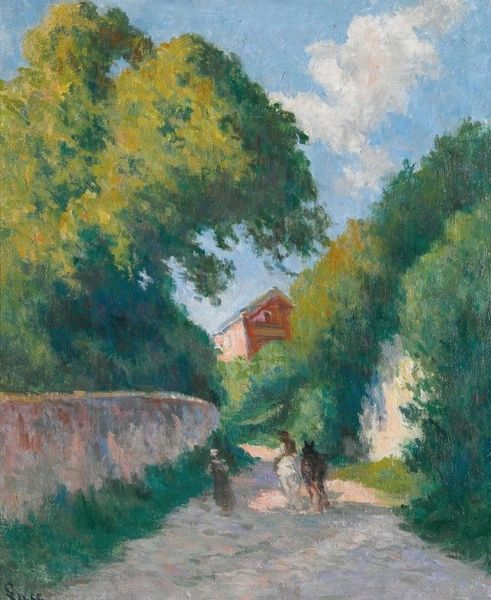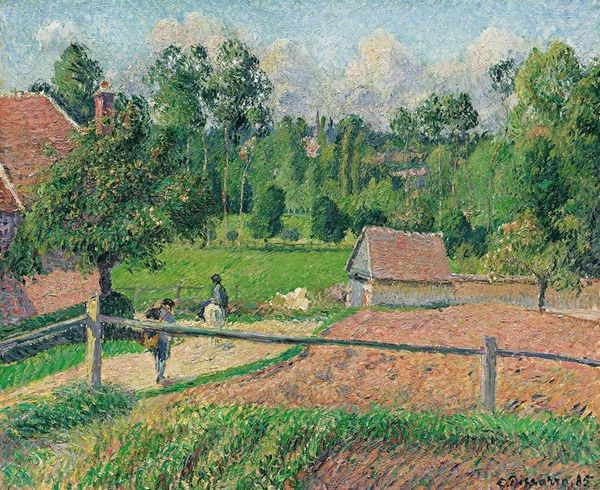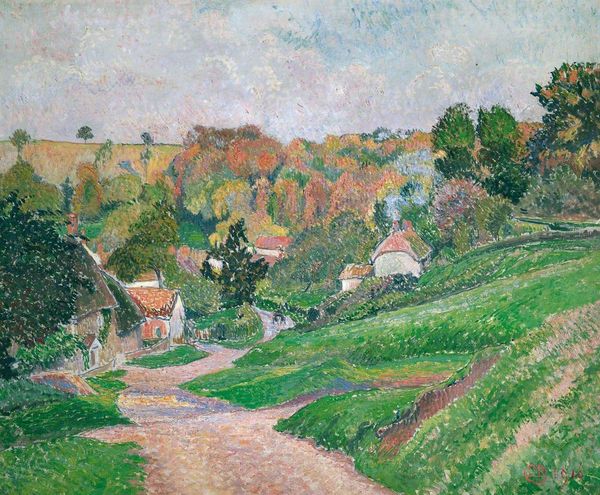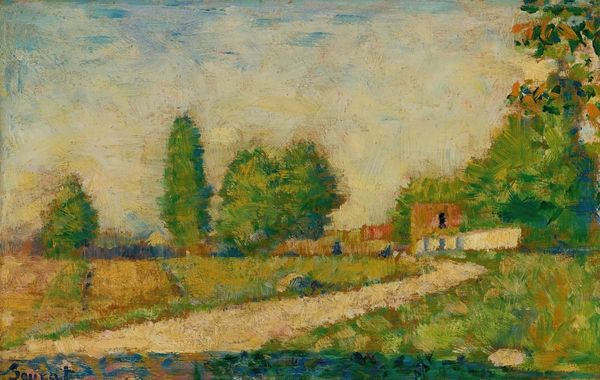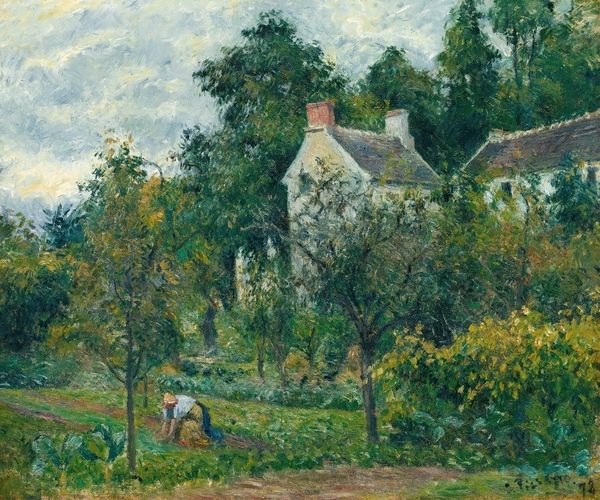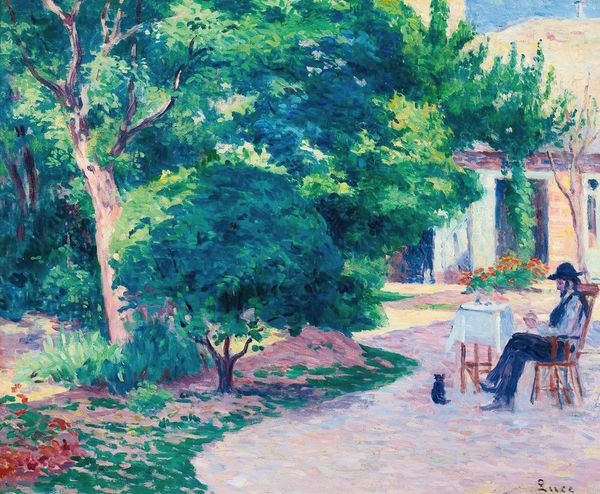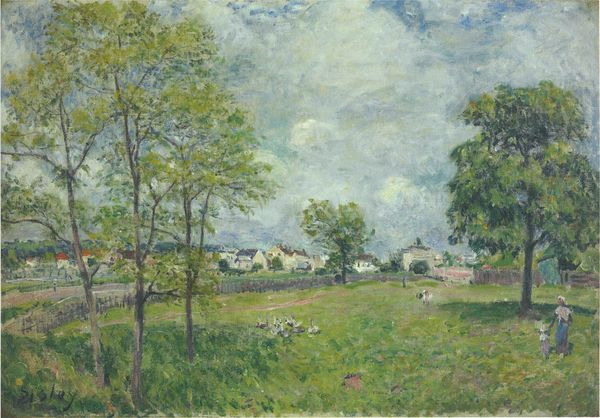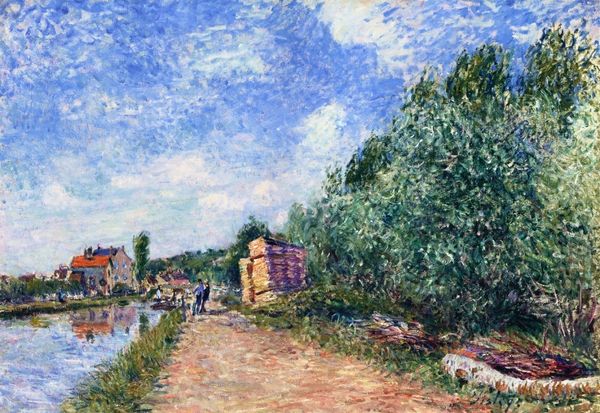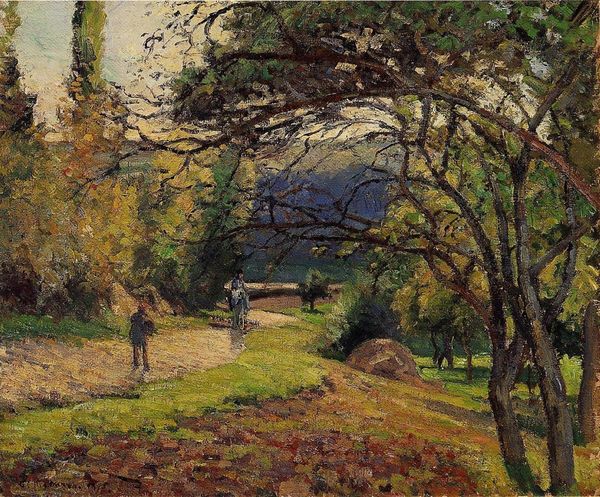
Copyright: Public Domain: Artvee
Curator: Here we have Armand Guillaumin's "Chemin Des Carrières à Miregaudon," painted in 1892. It's an oil on canvas, very much in the Post-Impressionist style, showing a rural scene. Editor: It strikes me as a rather peaceful, ordinary moment. The muted tones, especially the earthy browns and greens, create a very grounded and unpretentious feeling. It makes me think of the everyday lives of working-class individuals and what that may look like today. Curator: It’s interesting that you mention "ordinary," because Guillaumin wasn't necessarily interested in portraying grand historical narratives, but instead focused on the subtle beauty he observed in his immediate environment, particularly the changing effects of light and color within the landscape tradition. The location, Miregaudon, was in the Creuse region of France. We have to remember how industrialization started changing the way people were viewing rural life and labor. Editor: I agree. Looking closer, I notice how the figures, especially the one bent over working the field, blend into the land itself. This merging is very significant, indicating a deeply felt relationship between people and their labor and nature. I'm also drawn to the road bisecting the composition. Roads serve as tools to disconnect communities by prioritizing efficiency, but what could the road represent here, or could this serve as commentary on this transition? Curator: That's a powerful point. Guillaumin exhibited alongside the Impressionists, yet he continued exploring a personal vision that involved more simplified forms and bolder color combinations that would be associated later with the Post-Impressionists. Editor: And those bolder colors do add a certain emotional depth to what otherwise might be a simple landscape. It elevates the scene; you begin to look at land not simply as a resource, but with profound respect and dignity. It speaks volumes about the often-overlooked lives and contributions of ordinary workers. It prompts a critical consideration of what we now perceive as progress, whose labor this “progress” impacts and benefits, and to whose cost this happens. Curator: Exactly. The brushwork seems almost hurried, capturing a fleeting moment in time, a quality he definitely shared with his Impressionist colleagues. There's an honesty to how the rural landscape is depicted, too, lacking the idealized romanticism sometimes found in earlier landscape paintings. Editor: It challenges us to value these spaces, particularly when these landscapes continue to disappear in the name of profit. Thank you. Curator: Thank you. A fascinating perspective.
Comments
No comments
Be the first to comment and join the conversation on the ultimate creative platform.
